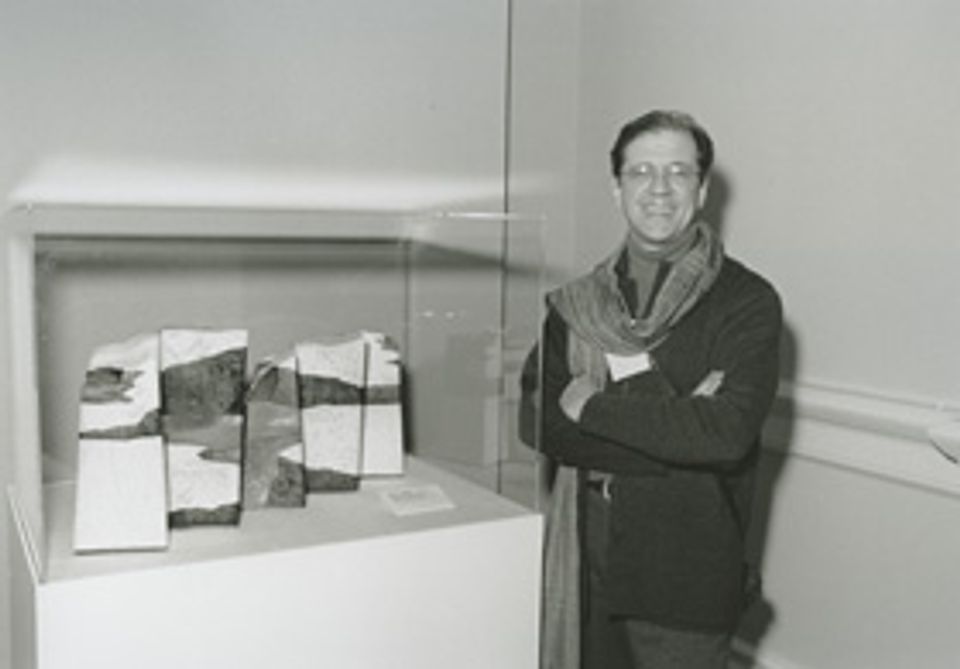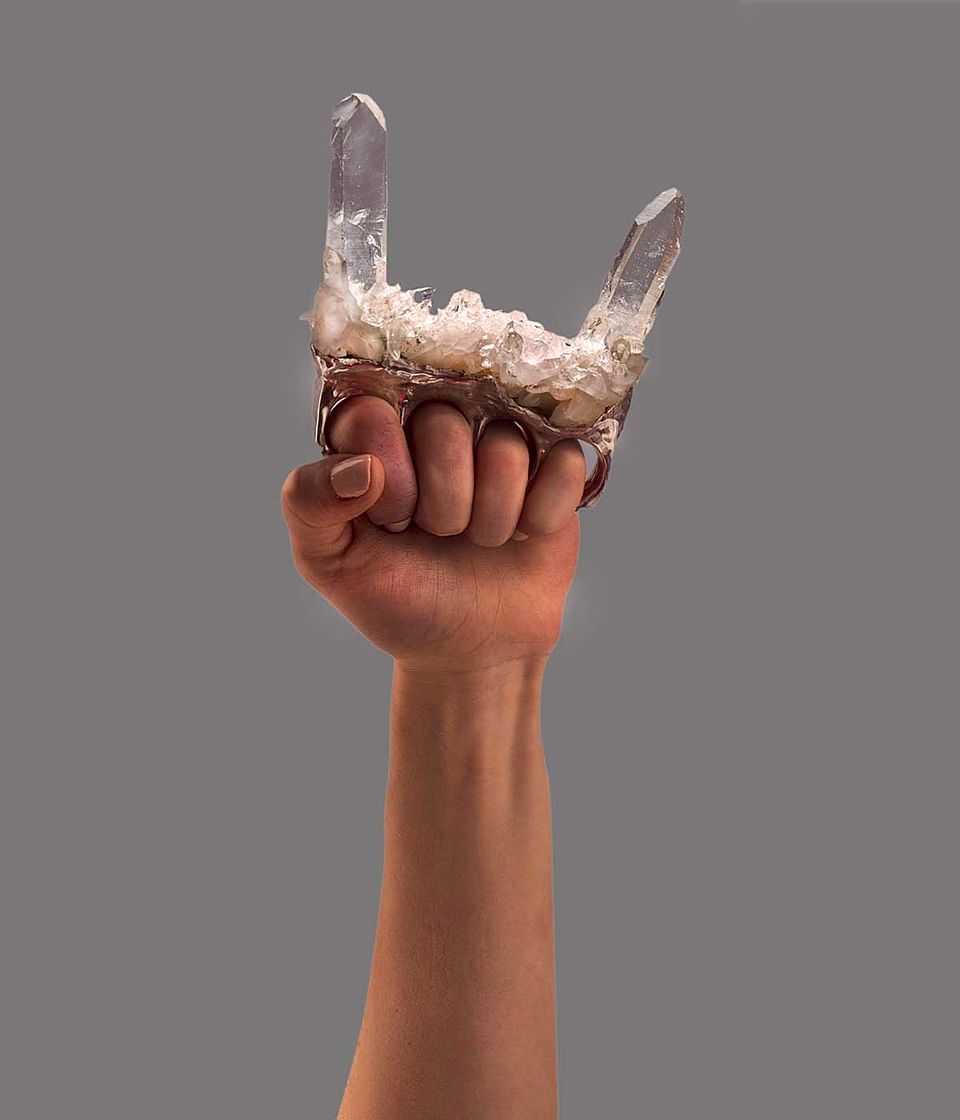Artist Biography
Since the early 1970s, potter Wayne Higby has explored the fusion of form and surface decoration through the depiction of panoramic Western landscapes on the surfaces of his earthenware bowls and covered boxes. Higby's scene-decorated vessels are not simply functional containers. For the artist, they are points of departure for imaginative journeys through the austere Colorado landscape of his childhood. As a youth, Higby loved to ride alone on horseback along the crests of the sandstone mesas to the east of Colorado Springs, and panoramic vistas of canyons, rivers, and vast rock formations constantly reappear on his vessels.
Since the enveloping scenery on his bowls is depicted according to the laws of perspective, and covers both the concave interior and convex exterior surfaces, the two-dimensional image completely penetrates the three-dimensional form. When lines and colors on both inside and outside suddenly combine into recognizable images, then surface and shape are instantly united, and the pot is magically transformed into an illusory scene that, given variegations in color, shade, and texture accidentally produced by raku firing, is suffused with a sense of natural light and atmosphere.
Temple's Gate Pass (1993.54.6a-j) represented a return to the covered box format, first explored in the early 1970s. Fabricated after a sabbatical from teaching duties in 1986–87, it is composed of five diamond-shaped, lidded boxes, each of which is conceived and decorated as an independent form. Yet, when aligned corner to corner, the slabsided walls present a unified, accordianlike plane across which is represented a single, autonomous landscape vista—much like a scene depicted on one side of a folding Oriental screen. But Higby's multipart piece, is fully three dimensional, and as the spectator circles the piece, the depicted scene, while retaining its unity, constantly changes.
Temple's Gate Pass represents the conjunction of two canyons in a panoramic vista of snowtopped mesas marked with turquoise lakes and rivers. It is not a specific locale, but an abstracted image of Western scenery. The austere geology of the Colorado mesas, characterized by sharply defined planes and edges, suggested the actual structure of the work. The micro-geometry of the boxes, composed of rhythmically alternating, handbuilt planes—some walls leaning inwards, others outwards—suggests the macroformations of the canyons themselves.
The landscape scene itself was based upon a series of panoramic drawings the artist made in 1988. Selecting one of the sketches, he first developed the physical structure of the linked boxes, and then, before and after firings, elaborated the design in three dimensions, ensuring its unity and continuous flow over multiple planes.
Jeremy Adamson KPMG Peat Marwick Collection of American Craft: A Gift to the Renwick Gallery (Washington, D.C.: Renwick Gallery, National Museum of American Art, Smithsonian Institution, 1994)
Luce Artist Biography
Wayne Higby’s ceramics are deeply personal, reflecting memories from his youth spent riding his horse along rocky trails in Colorado. He has borrowed from ancient Chinese and Japanese landscape artists, who used their work as a way to connect with the natural world. Higby uses art as a way to put him in touch with the open landscapes of his youth and to create a refuge from modern life.
















